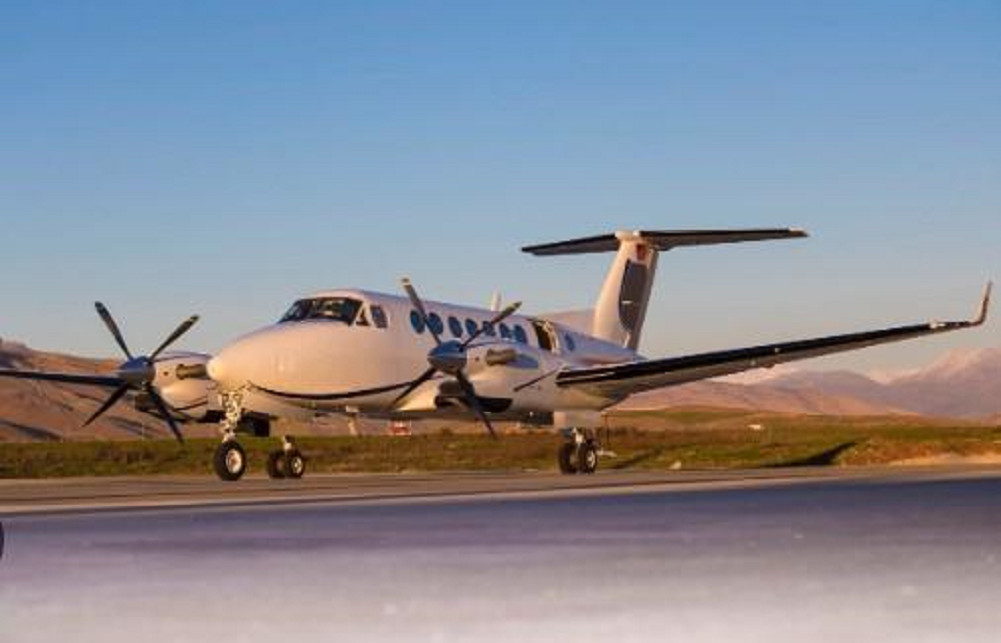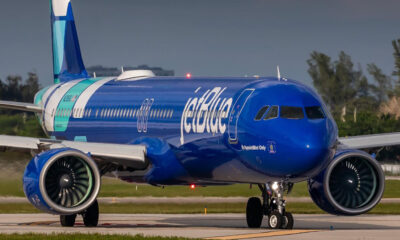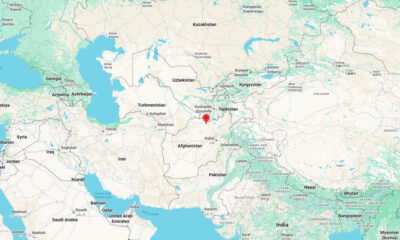Reviews
Why the turboprop was invented and how it became an aviation standard

The idea of a turboprop plane engine emerged over 100 years ago, at the start of the 20th century. However, it wasn’t until the 1950s that a turboprop engine was successfully fitted to an airliner. Specifically, the British Rolls-Royce Dart engine was installed in the Vickers Viscount.
It revolutionised the industry as turboprop engines were more efficient, faster, and capable of covering larger distances than traditional piston-engine aircraft.
In a nutshell, this is why turboprop engines came into being.
Turboprop aircraft became even more popular in the 60s and 70s. Even when the jet engine started to become popular, turboprop aircraft were still seen as a valuable addition to any fleet. Today, one of the most popular turboprop aircraft is the ATR 72. It seats up to 78passengers and is assembled in France by ATR.
More Efficient
Turboprop engines are more fuel-efficient than jet engines. Estimates suggest an ATR72-600 could use 45% less fuel than a similar-sized regional jet. That represents a significant saving for any airline company.
Any airline that operates short-haul flights, especially domestic ones, will appreciate the savings on offer by using a turboprop aircraft. It’s not just lower fuel costs. Turboprop engines have lower operational costs compared to jet engines.
Efficiency also means it’s cheaper to manufacture and run. Anything that increases the bottom line for aviation companies is likely to appeal. Turboprop aircraft are much more efficient, thanks to the way they operate.
They are better at converting exhaust energy, and the propeller is a more efficient way to generate thrust. The result is an engine which uses less fuel, provided you fly at lower altitudes.
Shorter Landing Requirements
Because a turboprop engine can develop thrust quickly, it is able to move the plane faster than a jet engine.
The faster engine pick up means planes can be at flying speed much quicker, effectively shortening the amount of runway needed.
Turboprop planes can land and take off on much shorter runways than jet engines. It makes them an attractive option for smaller airports and remote locations, where jet planes can’t land.
Of course, this also increases the number of planes using regional airports, which is beneficial for everyone involved.
Reduced Carbon Footprint
An ATR72 turboprop engine will release approximately 45% less CO2 than a similar-sized regular jet. This makes them an attractive option to airlines. They are, after all, seeking to meet government emission regulations. Studies have shown that turboprop engines are the best option for the environment when running short-haul flights.
There is little doubt that the turboprop engine is a significant milestone in the avionics industry. It can be said to combine the best of a jet engine with the best qualities of propeller-driven engines, but it’s only an effective choice for shorter distances.
According to statistics, in 2024, there were approximately 821 million passengers of domestic US flights. Airlines can’t afford to ignore this market, and using turboprop aircraft can save them money compared to jet engines. Being able to lower costs is essential for competitiveness and their survival. It’s hardly surprising that the turboprop has become an aviation standard; airlines need it.

-

 US News1 week ago
US News1 week agoJetBlue flight diverts to Tampa after altitude drop injures at least 15
-

 Breaking News2 days ago
Breaking News2 days agoAt least 3 dead, 11 injured after UPS cargo plane crashes near Louisville airport
-

 World4 days ago
World4 days agoStrong 6.3 earthquake strikes northern Afghanistan; felt across Pakistan
-

 World4 days ago
World4 days agoProtesters storm government building in Mexico after killing of local mayor
-

 World5 days ago
World5 days ago10 people stabbed on train in Huntingdon, England
-

 US News1 day ago
US News1 day ago5 firefighters injured in vehicle explosion in the Bronx, NYC
-

 US News1 week ago
US News1 week agoTrump says U.S. will resume nuclear weapons testing ‘on an equal basis’
-

 US News1 week ago
US News1 week agoDamage reported in Kilgore, Texas following tornado warning




